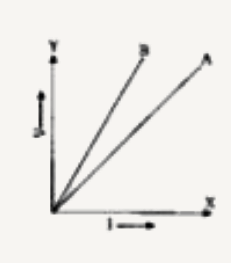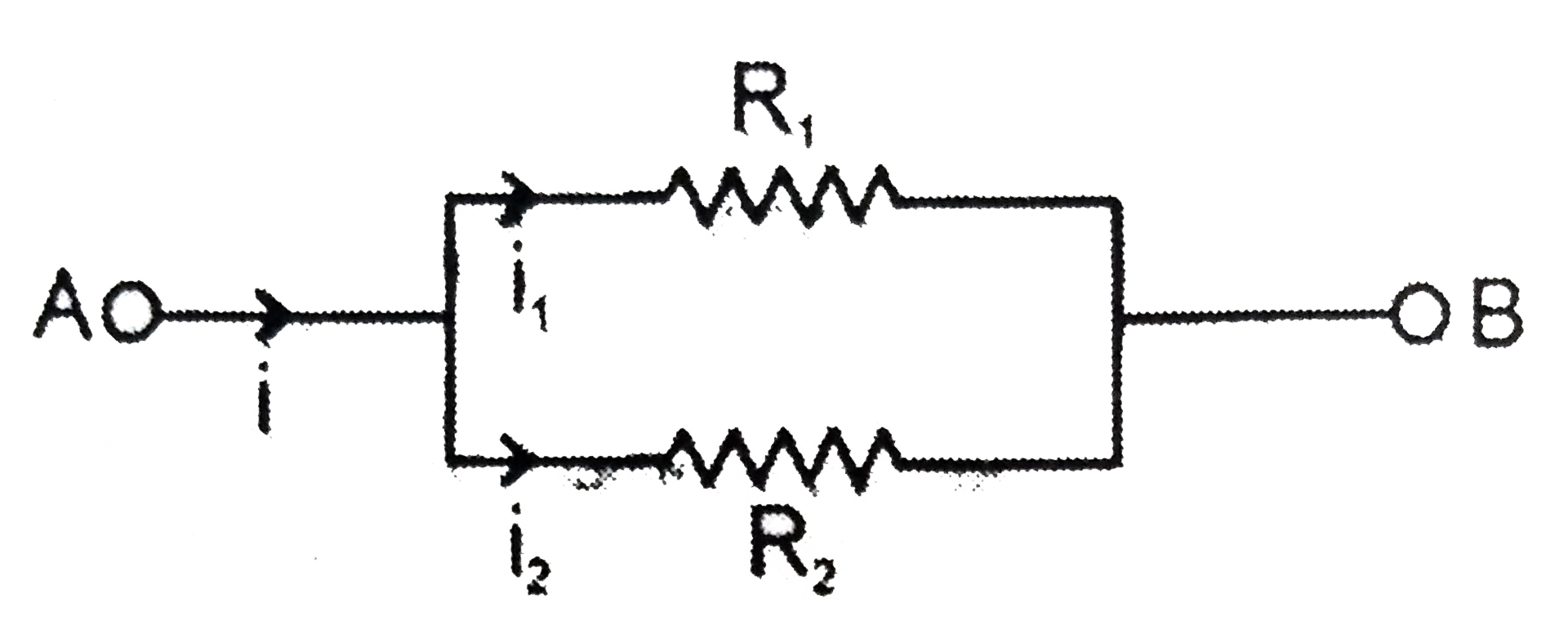When is the parallel combination of cells advantageous and why?
Step-by-Step Solution:
1. Understanding Internal and External Resistance:
- Cells have an internal resistance (r) which affects their performance when connected to an external circuit that has its own resistance (R).
- The internal resistance of the cell is the resistance to the flow of current within the cell itself, while the external resistance is the resistance of the circuit connected to the cell.
2. Condition for Parallel Combination:
- A parallel combination of cells is advantageous when the internal resistance of the cells is significantly greater than the external resistance. This means r≫R.
3. Reason for Advantage:
- When cells are connected in parallel, the voltage across each cell remains the same and equal to the total voltage supplied. This is beneficial when the internal resistance is high because:
- If cells were connected in series, the total internal resistance would increase, leading to a larger voltage drop across the internal resistances and reducing the effective voltage available to the external circuit.
- In a parallel configuration, the effective internal resistance decreases, allowing more current to flow through the external circuit.
4. Voltage Consistency:
- In a parallel arrangement, the potential difference across each cell is the same. This ensures that even if the internal resistance is high, the voltage available to the external load remains consistent.
5. Conclusion:
- Therefore, the parallel combination of cells is advantageous when the internal resistance is much greater than the external resistance because it allows for better voltage stability and more efficient current flow to the external circuit.
- Cells have an internal resistance (r) which affects their performance when connected to an external circuit that has its own resistance (R).
- The internal resistance of the cell is the resistance to the flow of current within the cell itself, while the external resistance is the resistance of the circuit connected to the cell.
- A parallel combination of cells is advantageous when the internal resistance of the cells is significantly greater than the external resistance. This means r≫R.
- When cells are connected in parallel, the voltage across each cell remains the same and equal to the total voltage supplied. This is beneficial when the internal resistance is high because:
- If cells were connected in series, the total internal resistance would increase, leading to a larger voltage drop across the internal resistances and reducing the effective voltage available to the external circuit.
- In a parallel configuration, the effective internal resistance decreases, allowing more current to flow through the external circuit.
- In a parallel arrangement, the potential difference across each cell is the same. This ensures that even if the internal resistance is high, the voltage available to the external load remains consistent.
- Therefore, the parallel combination of cells is advantageous when the internal resistance is much greater than the external resistance because it allows for better voltage stability and more efficient current flow to the external circuit.
Topper's Solved these Questions
- BOOK - AAKASH SERIESCHAPTER - CURRENT ELECTRICITYEXERCISE - EXERCISE (VERY ANSWER QUESTIONS) (Choose the correct alternative)3videos
CURRENT ELECTRICITY
- BOOK - AAKASH SERIESCHAPTER - CURRENT ELECTRICITYEXERCISE - PROBLEMS (LEVEL-1)17videos
CURRENT ELECTRICITY
- BOOK - AAKASH SERIESCHAPTER - CURRENT ELECTRICITYEXERCISE - EXERCISE (SHORT ANSWER QUESTIONS)12videos
CURRENT ELECTRICITY
- BOOK - AAKASH SERIESCHAPTER - COMMUNICATION SYSTEMS EXERCISE - PRACTICE EXERCISE (TV Antenna)16videos
COMMUNICATION SYSTEMS
- BOOK - AAKASH SERIESCHAPTER - CURRENT ELECTRICITYEXERCISE - EXERCISE - IA2videos
CURRENT ELECTRICITY
Similar Questions
The V-I graph for a series combination and for a parallel combination of two resistors is 1 shown in Fig. Which of the V two, A or B, represents the parallel combination ? Give a reason for your answer.
 View Solution
View SolutionThe V-I graph for a series combination and for a parallel combination of two resistor is shown in the figure below. Which of the two A or B, represents the parallel combination? Give a reason for your answer.
 View Solution
View Solution
Knowledge Check
- Question 1 - Select One
In parallel combination of n cells, we obtain
Amore voltageBmore currentCless voltageDless current - Question 2 - Select One
In parallel combination of resistances :
Ap.d. is same across each resistanceBtotal resistance is increasedCcurrent is same in each resistanceDall above are true.
The V-I graph for a series combination and for a parallel combination of two resistor is shown in the figure below. Which of the two A or B, represents the parallel combination? Give a reason for your answer.
 View Solution
View SolutionA : When two cells of equal EMF and equal internal resistances are connected is parallel with positive plate of the other than , the net EMF , of the combination will be equal to the EMF of each cell.
R : Effective internal resistance of the parallel combination of two identical cells will be half of the internal resistance of each cell.View SolutionDraw a circuit diagram of an electric circuit containing a cell, a key, an ammeter, a resistance of 2Ω in series with a combination of two resistors (4Ω each) in parallel and a voltmeter across the parallel combination. Will the potential difference across the 2Ω resistor be the same as that across the parallel combination of 4Ω resistors ? Give reason.
View SolutionWhen two resistors are in parallel combination then determine i1 and i2 if the combination carries a current I ?
 View Solution
View SolutionAssertion. Specialisation of cells is advantageous to organisms.
Reason. It increases operational efficienctView SolutionThe ratio of energy stored by the series combination of two idential capacitors to their parallel combination , when connected to same supply voltage, is
View Solution

